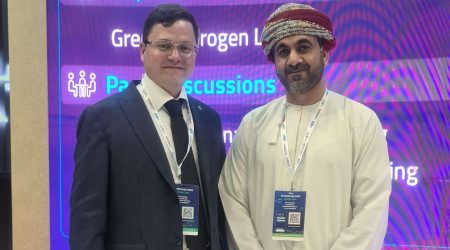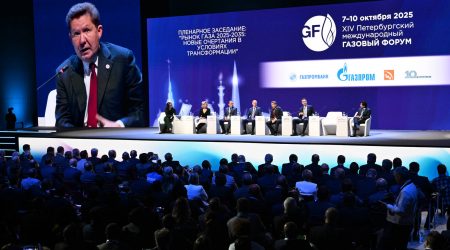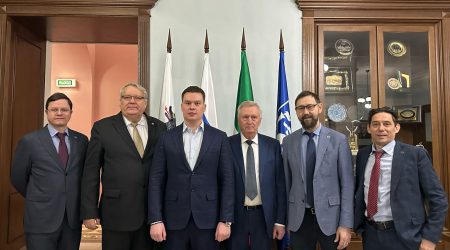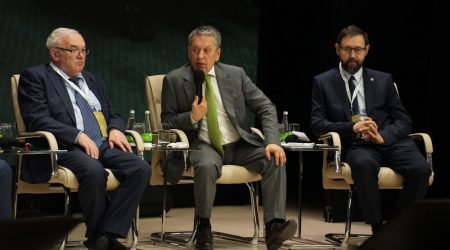Vice-Rector Danis Nurgaliev sheds light on KFU’s intellectual property policy and achievements
He visited Moscow State Law University to join the 16th International Forum “Innovative Development through the Intellectual Property Market” as part of the International Intellectual Property Days under the auspices of the United Nations.
At the plenary session of the forum with the report “Problems of monetization of intellectual property in the university and prospects for their solution” was made by Danis Nurgaliev.
He said that KFU conducts a significant amount of research and development (R&D) work, which is accompanied by the development of intellectual property objects (IPOs).
“The dynamics of IPO generation is quite high. In 2024 alone, KFU received 46 patents for inventions, 4 foreign patents, 109 certificates for computer programs, 27 certificates for databases, 5 certificates for trademarks,” listed the Vice-Rector. “In 2023, KFU received 56 patents for invention, 1 foreign patent, 3 patents for industrial designs, 77 certificates for computer programs, 9 certificates for databases.”
For example, the list of patented intellectual property objects of KFU includes highly effective medicines: anti-inflammatory; antitumor; antibacterial; antifungal; antiseptic; antiepileptic, non-steroidal anti-inflammatory drug for the treatment of arthritis and arthrosis and others. All of them have successfully passed preclinical studies.
“Another promising direction for IP is petroleum studies,” said Dr Nurgaliev. “In 2020, a world-class scientific center, the Center for Liquid Hydrocarbons, was established at KFU in consortium with Ufa State Petroleum Technical University, Russian State University of Oil and Gas, and Skolkovo Institute of Science and Technology.”
At the Center, the speaker noted, fundamental, prospecting and applied research in geology, geochemistry and development of oil deposits using modern physical and chemical methods and end-to-end technologies is carried out; environmentally friendly, energy-efficient and cost-effective technologies for forecasting, exploration, and production of liquid hydrocarbons are created.
“For example, more than 20 projects have been implemented with Tatneft aimed at reconstruction of geological conditions of oil and gas field formation, development of methodological approaches to modeling of sedimentation processes of Devonian and Lower Carboniferous terrigenous strata on the territory of Romashkino field, as well as formulation of a unified methodology for assessment of filtration-capacity properties of reservoir rocks,” he continued. “With the use of AI technologies, the data on more than 35,000 wells, more than 1,600 estimated deposits have been analysed. ResNeuro software kit for localization of residual reserves using neural network algorithms has been developed. We have started using this software at other large fields. The technology is supported by more than 20 patents.”
As the Vice-Rector informed, the University cooperates with Gazprom Neft in chemical methods of enhanced oil recovery. In cooperation with this company, more than 30 projects have been implemented, more than 30 IPOs have been obtained, including 6 joint ones.
A total of 41 technologies developed by the Center have been implemented in the working process of companies or are at the stage of implementation, and 19 technologies are being developed.
“Thus, the above data indicate a good pace of R&D,” he summarized. “However, the next stage – implementation and monetization of these developments – leaves much to be desired. And there is an urgent question: what are the ways of implementation (monetization) of these developments in the interests of the university?”
Danis Nurgaliev listed a number of problems faced by universities engaged in innovation activities and suggested ways to solve them.
“A significant share of the results of intellectual activity (RIA) universities and scientific organizations implement in the form of services and R&D for businesses. Thus, part of this earnings is in reality a payment for the creation and maintenance of RIAs. It is necessary to develop regulations and procedures for the allocation and use of these funds, as well as accounting. This will allow universities and scientific organizations to make fuller use of RIAs, motivate their creators, and will also contribute to increasing the level of technology readiness,” he concluded.
In addition, it is necessary to develop documents and regulations for putting RIAs on the balance sheet of universities and scientific organizations, as well as a system of incentives that will contribute to the increase of intangible assets of the organization, regulations for amortization, sale, and write-off of assets.
Dr Nurgaliev’s initiative was supported by the participants of the event.
The proposals will be included in the final documents of the forum, organized by the Republican Research Institute of Intellectual Property, the Russian Bar Association, the Russian Academy of Sciences, the Eurasian Patent Office, the Eurasian Patent Organization, and the Moscow State Law University.









